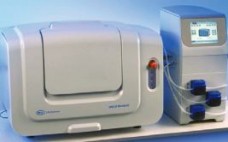Fueled by a recent resurgence in public financing and compelling clinical data for indications as diverse as acute macular degeneration and pancreatic cancer, a growing number of cell therapies are driving toward pivotal clinical studies and commercialization. Although regulatory precedents have been set for various autologous and allogeneic products in the United States, Asia, and the European Union, regulatory guidance continues to evolve for a widening array of cell products. Adult stem cells (e.g., mesenchymal stem cells), embryonic stem cells,…
Analytical
Accelerating Purification Process Development of an Early Phase MAb with High-Throughput Automation
Monoclonal antibodies (MAbs) are the fastest growing segment in the biopharmaceutical industry because they are potentially efficacious in the treatment of diseases such as cancer and autoimmune disorders (1,2). With steadily increasing demand for efficient and affordable therapies, speed to clinic/market is important, and biopharmaceutical companies push multiple drugs into development each year to ensure business sustainability (3,4,5,6). Downstream purification process development for therapeutic MAbs is a critical step on their path to reach clinical trials and beyond…
Single-Use Bioreactors and Microcarriers
Cell-based therapies hold promise for treating many acute and chronic diseases (1). Optimism surrounding that therapeutic potential has driven the initiation of multiple clinical trials in pursuit of such treatments. Procedures for preparing these therapeutic agents begin with selective isolation of cells from desired tissues. That is followed by ex vivo expansion of cells of desired phenotype and functionality. Once expanded to acceptable levels, cells are stored to preserve their viability during transportation to treatment facilities. The final step in…
Assessing Flange Strength and Dimensional Variability
Plastic syringes are viable alternatives to glass syringes in the biopharmaceutical market. They have two main advantages over glass syringes: their break resistance (specifically on the finger flange) and their ability to maintain tighter dimensional tolerances and less variability (because of the flexible molding process). Both attributes are critical when a 1-mL long prefilled syringe is used with an autoinjector device. The high break resistance of plastic syringes can reduce the number of rejected units during a fill–finish process. And…
North, South, East, and West
Electrophoresis is the basis of all blotting methods, and BPI Lab covered it last month (1). Electroblotting is a method for transferring electrophoretically separated proteins or nucleic acids onto a polyvinylidene fluoride (PVDF) or nitrocellulose membrane for permanence using electric current and a transfer buffer solution. This allows for analysts to further study them using probes, ligands, or stains. Capillary blotting is a variation designed to work with capillary electrophoresis. After electrophoresis the following are stacked in cathode-to-anode order: a…
Enabling Technologies
Many technological advancements in recent years have enabled companies to shorten time to market, to better understand their manufacturing processes, and to characterize their products well. In BPI’s December 2013 issue (pages 47–50), I reported on the first half of an informal reader survey about those technologies, with commentary from some survey participants and others. This month concludes with my examination of analytical, formulation/fill–finish, and facilities technologies. Analytical Technologies After writing several installments of our new “BPI Lab” series this…
Ready-to-Use Cryopreserved Primary Cells
Abiological measurement of drug activity is perhaps the most critical step in the series of tests required for product release both for clinical trials and the market. This evaluation plays an important role in the stability assessment of drug candidates. According to the International Conference on Harmonisation of Technical Requirements for Registration of Pharmaceuticals for Human Use (ICH) Q6B document, measurements of biological activity can be performed in defined animal models that demonstrate a measurable physiological change in response to…
Nucleic Acid Impurity Reduction in Viral Vaccine Manufacturing
Commercial-scale viral vaccine manufacturing requires production of large quantities of virus as an antigenic source. To deliver those quantities, a number of systems are used for viral replication based on mammalian, avian, or insect cells. To overcome the inherent limitations in production outputs with serial propagation of cells, mammalian cells can be immortalized, which increases the number of times they can divide in culture. Modifications that immortalize cells are typically accomplished through mechanisms similar to those converting normal cells to…
Innovation in Biopharmaceutical Manufacture
The following is a report from a workshop on innovation in biopharmaceutical manufacturing held at the Annual bioProcessUK Conference in Bristol on 29 November 2012. The aim of the workshop was to access the experience of practitioners in the United Kingdom so as to understand better the challenges and opportunities for innovation in this sector. The workshop addressed the drivers that influence the implementation of process improvements and novel technologies in biopharmaceutical manufacture from the perspective of both manufacturers and…
Analysis By Size and Charge
An early BPI Lab article addressed the power of liquid chromatographic separations for biopharmaceutical laboratory use (1). Such techniques separate biomolecules based on a number of different properties: size, solubility, hydrophobicity/-philicity, binding affinity. The next most powerful means of separation — and thus high-resolution identification — of nucleic acids and proteins/peptides is based primarily on electrostatic properties: electrophoresis. Although it doesn’t really work in a process or preparative setting, it is a fundamental technique in modern biopharmaceutical laboratories, where it…

